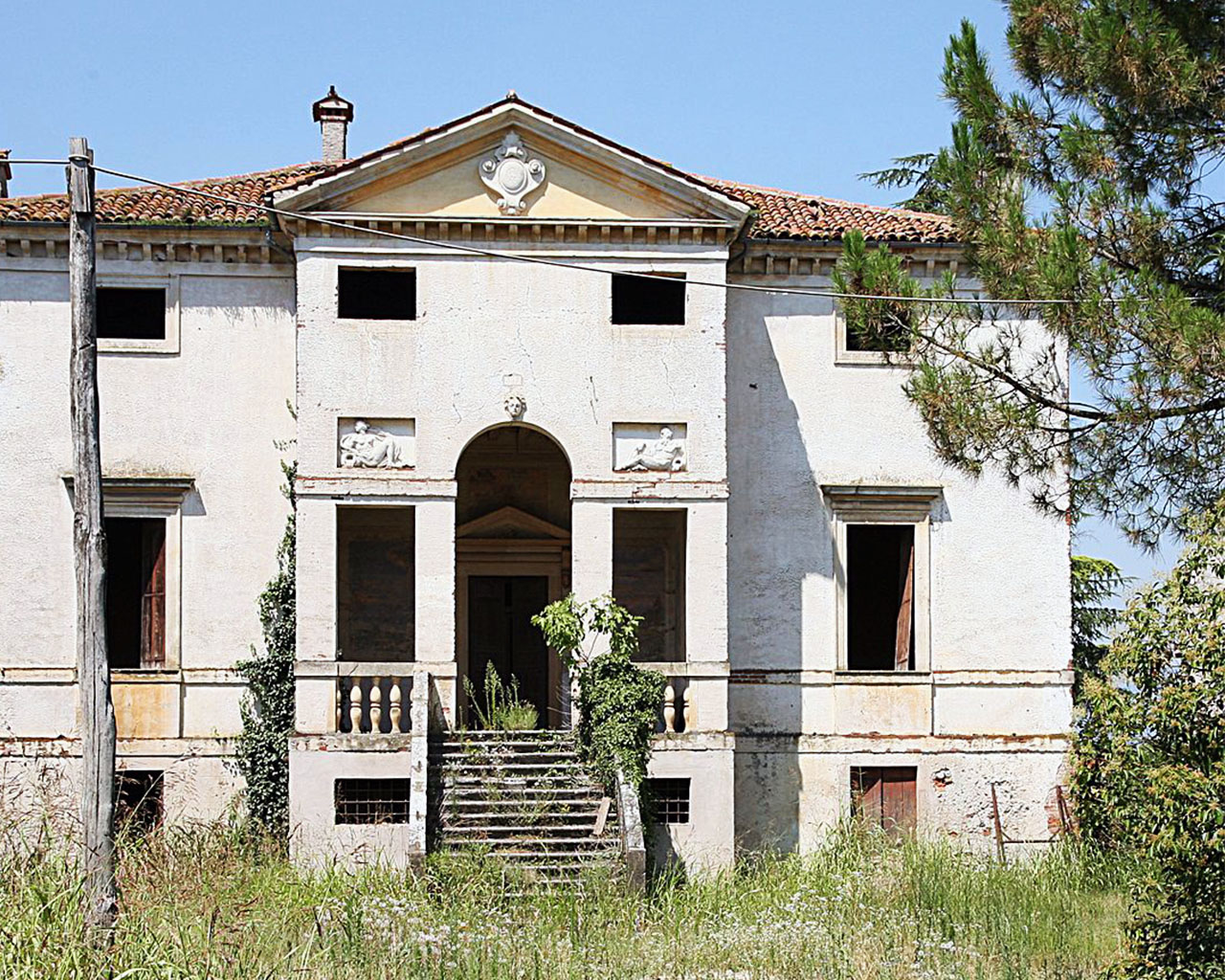Historical and descriptive analysis of a heritage to be recovered
Villa Forni Cerato is a Venetian villa located in Montecchio Precalcino, in the province of Vicenza, whose design is attributed to the architect Andrea Palladio in about 1565.
The building has been on the UNESCO World Heritage List since 1996 . However, the preservation of this architectural asset is in jeopardy as it is in a state of neglect.
Villa Forni Cerato represents an exemplary case of Palladian intervention on a pre-existing building, transformed albeit with modest means into a significant monumental episode. This villa is the only one designed by Palladio for an admittedly wealthy
but not noble owner: Girolamo Forni, a wealthy timber merchant, a friend of artists such as Vittoria and a painter himself, a collector of antiquities and a member of the Accademia Olimpica in Vicenza. It is possible that the dry minimalism of this
calibrated building is in harmony with the bourgeois social status of the owner.
It is precisely the abstract language of Villa Forni that has raised doubts about its actual Palladian authorship, as has the extremely simple floor plan, lacking the usual relationships between the dimensions of the rooms, or the presence of some proportional
disharmony between the parts of the building. In reality the villa is the outcome of the renovation of the pre-existing "old house," and if anything the point of view should be reversed, grasping the Palladian intelligence in transforming conditioning
constraints into expressive opportunities. This is exemplified by the clear design of the serliana , with the columns reconducted to crisp stereometric pillars according to the limited width of the loggia or the frieze reduced to a simple band under
the cornice. The elevation of the loggia, moreover, is conceptually identical to that of the Cogollo house, once again connecting these two singular buildings.
